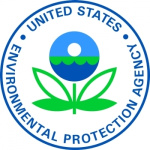- Industry: Government
- Number of terms: 11955
- Number of blossaries: 0
- Company Profile:
U.S. Environmental Protection Agency (EPA) is a federal agency responsible for the development and enforcement of regulations for human health and environment protection. The agency researches and sets standards for environmental programs and delegates. It was founded in 1970 following the proposal ...
Planting of forests on lands that have previously contained forests but that have been converted to some other use.
Industry:Natural environment
Large-scale density-driven circulation in the ocean, caused by differences in temperature and salinity. In the North Atlantic the thermohaline circulation consists of warm surface water flowing northward and cold deep water flowing southward, resulting in a net poleward transport of heat. The surface water sinks in highly restricted sinking regions located in high latitudes.
Industry:Natural environment
The supreme body of the United Nations Framework Convention on Climate Change (UNFCCC). It comprises more than 180 nations that have ratified the Convention. Its first session was held in Berlin, Germany, in 1995 and it is expected to continue meeting on a yearly basis. The COP's role is to promote and review the implementation of the Convention. It will periodically review existing commitments in light of the Convention's objective, new scientific findings, and the effectiveness of national climate change programs.
Industry:Natural environment
Coal mine methane is the subset of coalbed methane that is released from the coal seams during the process of coal mining. For more information, visit the Coalbed Methane Outreach program site.
Industry:Natural environment
Coalbed methane is methane contained in coal seams, and is often referred to as virgin coalbed methane, or coal seam gas. For more information, visit the Coalbed Methane Outreach program site.
Industry:Natural environment
Increased concentrations of carbon dioxide in sea water causing a measurable increase in acidity (i.e., a reduction in ocean pH). This may lead to reduced calcification rates of calcifying organisms such as corals, mollusks, algae and crustaceans.
Industry:Natural environment
Planting of new forests on lands that historically have not contained forests.
Industry:Natural environment
A measure of the total energy that a gas absorbs over a particular period of time (usually 100 years), compared to carbon dioxide.
Industry:Natural environment
Underground deposits of gases consisting of 50 to 90 percent methane (CH4) and small amounts of heavier gaseous hydrocarbon compounds such as propane (C3H8) and butane (C4H10).
Industry:Natural environment
Organic compounds, other than methane, that participate in atmospheric photochemical reactions.
Industry:Natural environment
